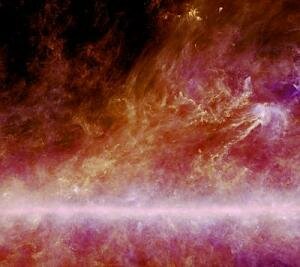Probing the Dark Side of the Universe
Advancing into the next frontier in astrophysics and cosmology depends on our ability to detect the presence of a particular type of wave in space, a primordial gravitational wave.
Much like ripples moving across a pond, these waves stretch the fabric of space itself as they pass by. If detected, these weak and elusive waves could provide an unprecedented view of the earliest moments of our universe.
In an article appearing in the May 21 issue of Science, Lawrence Krauss, ASU theoretical physicist and cosmologist, and researchers from the University of Chicago and Fermi National Laboratory explore the most likely detection method of these waves, with the examination of cosmic microwave radiation (CMB) standing out as the favored method.
During the past century, astronomy has been revolutionized by the use of new methods for observing the universe, but still today the origin of dark energy and dark matter is unknown. The answer to these and other mysteries may require us to probe back to the earliest moments of the Big Bang expansion.
Questions of origins, such as "How did the Universe begin?" provoke fascination and are at the forefront of ASU's Origins Project, which Krauss directs.
"Before a period of 380,000 years after the Big Bang, the universe was opaque to electromagnetic radiation," said Krauss, a professor in ASU's School of Earth and Space Exploration and the physics department in the College of Liberal Arts and Sciences.
"So, to explore earlier times we need to search for other observables outside of the electromagnetic spectrum. Gravitational waves interact very weakly with matter and so gravitational waves produced near the very beginning of time can make their way unimpeded to us today, providing a potentially new probe of early universe cosmology."

"Though the Planck satellite has yet to return results from the cosmic microwave background, its new results show exquisite images of cold dust in our own galaxy. This image shows the galactic plane - the line running horizontally across the image near the bottom - and the huge clouds of cool dust that rise far above the plane. (Credit: ESA and the HFI Consortium, IRAS)"
Source: Arizona State University
|